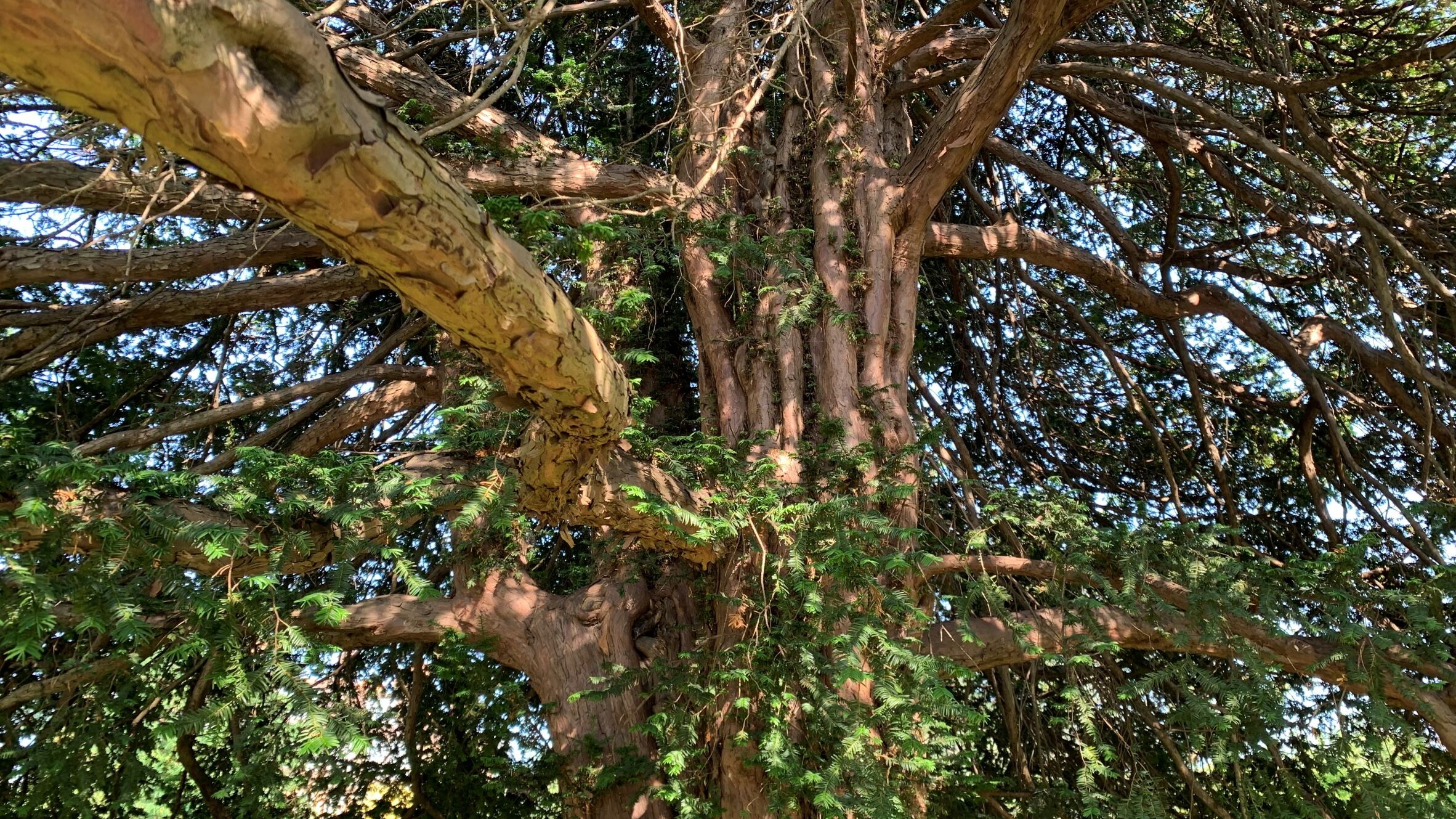Scientific Name: Taxus baccata
Common Name: Yew tree
Family: TAXACEAE
Origin: Europe, western Asia and North Africa
Yew trees are dioecious plants, which means that there are male and female reproductive organs on separate plants. Male trees produce pollen and female trees produce seeds. The yew, along with other conifers, is known to be able to change gender. Research into why these changes might occur is still ongoing. It could be due to various environmental factors or as an attempt to bear seeds later in its life. In many cases, only a portion of the plant may change from pollen producing to seed producing. For example, a few branches on part of a yew tree may change gender while the rest of the branches remain the same.
The yew tree can live for a long time, with the age of some specimens calculated at between 2,000 and 4,000 years old. The long life of the plant, its evergreen leaves, and its ability to withstand decay may be why the tree is associated with eternal life. All parts of the Yew tree, except for red aril around the seed, are deadly poisonous to humans.
Further Reading:
https://www.conifers.org/ta/Taxus_baccata.php
https://www.missouribotanicalgarden.org/PlantFinder/PlantFinderDetails.aspx?taxonid=287305
https://www.woodlandtrust.org.uk/trees-woods-and-wildlife/british-trees/a-z-of-british-trees/yew/
https://www.bbc.com/news/uk-scotland-tayside-central-34700033

